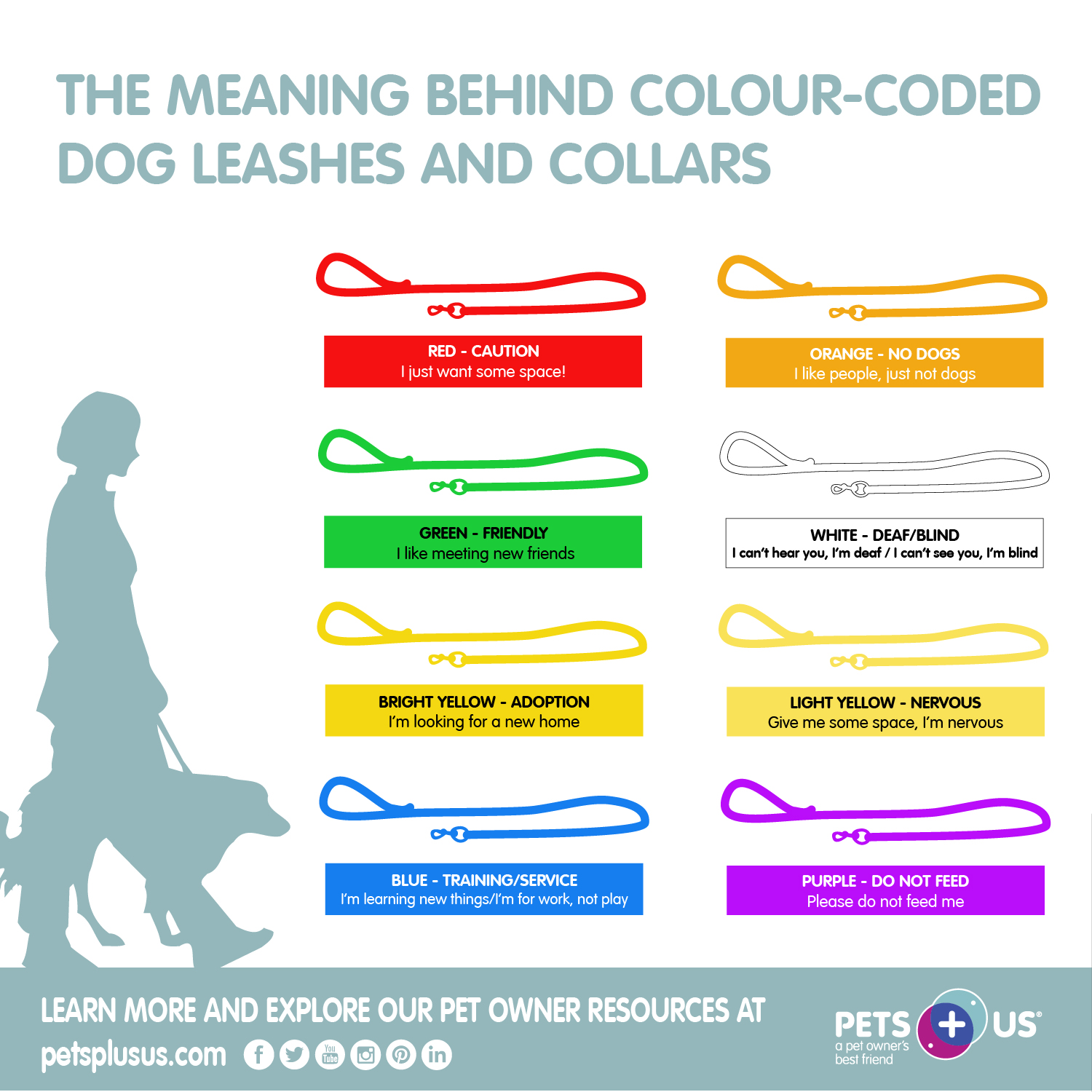
The Meaning Behind Colour-Coded Dog Leashes and Collars
Did you know there is a colour coding system used by dog owners to signify specific health or behavioural issues their pet may have? Coloured leashes and ribbons are a great way to indicate if your dog is aggressive, blind or in training. Even if your dog doesn’t fall into any of these categories, it’s an important thing to be aware of so you can detect potential issues with other dogs you may come across when out for a walk.
Leashes and collars
A quick Google search will direct you to a number of colour-coded collars and leashes such as these. These items help give dogs of all breeds the voice they need to let strangers know what their personality is before they are approached, making dog walking more enjoyable for everyone.
The colour-coded system is visible from a distance to warn others in advance, and has large embroidered writing so there is no confusion on the meaning.
RED - CAUTION (dog needs more space)
ORANGE - NO DOGS (doesn't enjoy the company of other dogs)
GREEN - FRIENDLY (let's be friends!)
WHITE - DEAF/BLIND (dog can't hear or see you)
BRIGHT YELLOW - ADOPTION (dog is looking for a new home)
LIGHT YELLOW - NERVOUS (nervous dog, needs more space)
BLUE - TRAINING/SERVICE (don't pet or approach without owner's consent)
PURPLE - DO NOT FEED (don't give food or treats)

Coloured Ribbons & Bandanas
Another option for dog owners is to use coloured ribbons or bandanas that follow the same colour coding as seen above tied in a prominent spot on a dog’s leash.
The meaning of various coloured ribbons or bandanas on dogs can vary depending on the specific colour-coding system being used. However, there are some commonly recognized meanings associated with certain colours:
Red: A red ribbon or bandana often signifies that the dog is reactive, aggressive, or requires space. It serves as a visual indicator to others to approach with caution and maintain a safe distance.
Yellow: Yellow ribbons or bandanas are typically used to indicate that a dog may be nervous, anxious, or in need of space. It signals to others to be gentle, give the dog space, and avoid sudden or intrusive approaches.
Green: Green ribbons or bandanas are often associated with dogs who are friendly and approachable. It signifies that the dog is open to interaction, petting, and socializing.
Blue: Blue ribbons or bandanas are sometimes used to identify dogs in training. It can indicate that the dog is undergoing training, learning new behaviours, or working on specific tasks.
Orange: Orange ribbons or bandanas may indicate that the dog has specific behavioural or training needs. It can serve as a warning to others that the dog may require special handling or accommodations.
Always Ask!
It's important to note that color-coded systems can vary, and their meanings may not be universally understood. It's always recommended to ask the owner or handler for clarification if you encounter a dog wearing a coloured ribbon or bandana to ensure appropriate interaction and respect for the dog's needs. Even if it’s green, it is important to always ask the dog’s owner if you can touch their pet.
Spreading the word about the use of coloured collars, leashes and ribbons is the first step in encouraging responsible pet ownership and can help ensure dogs are given the space and support they need when out for a walk.
